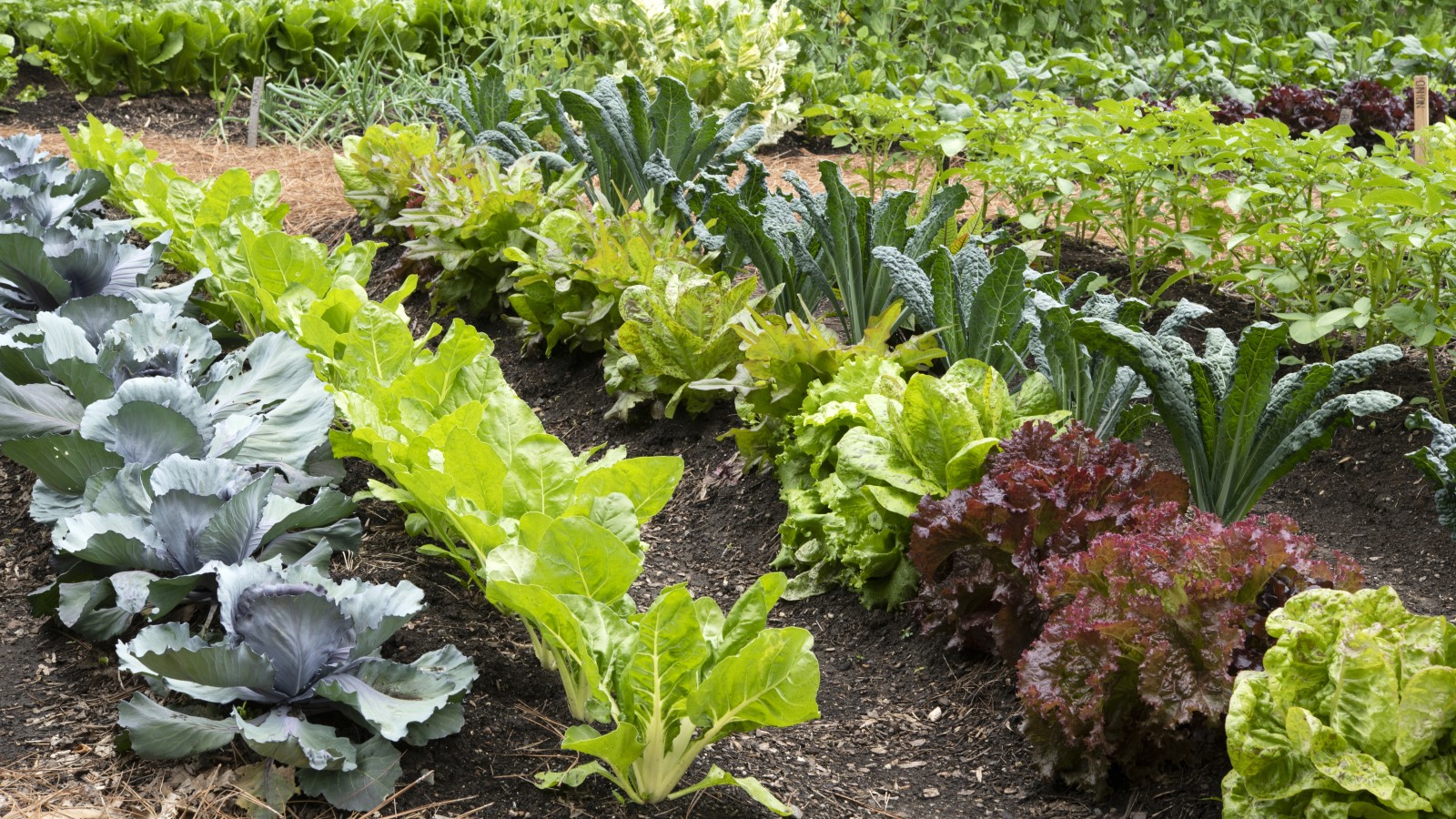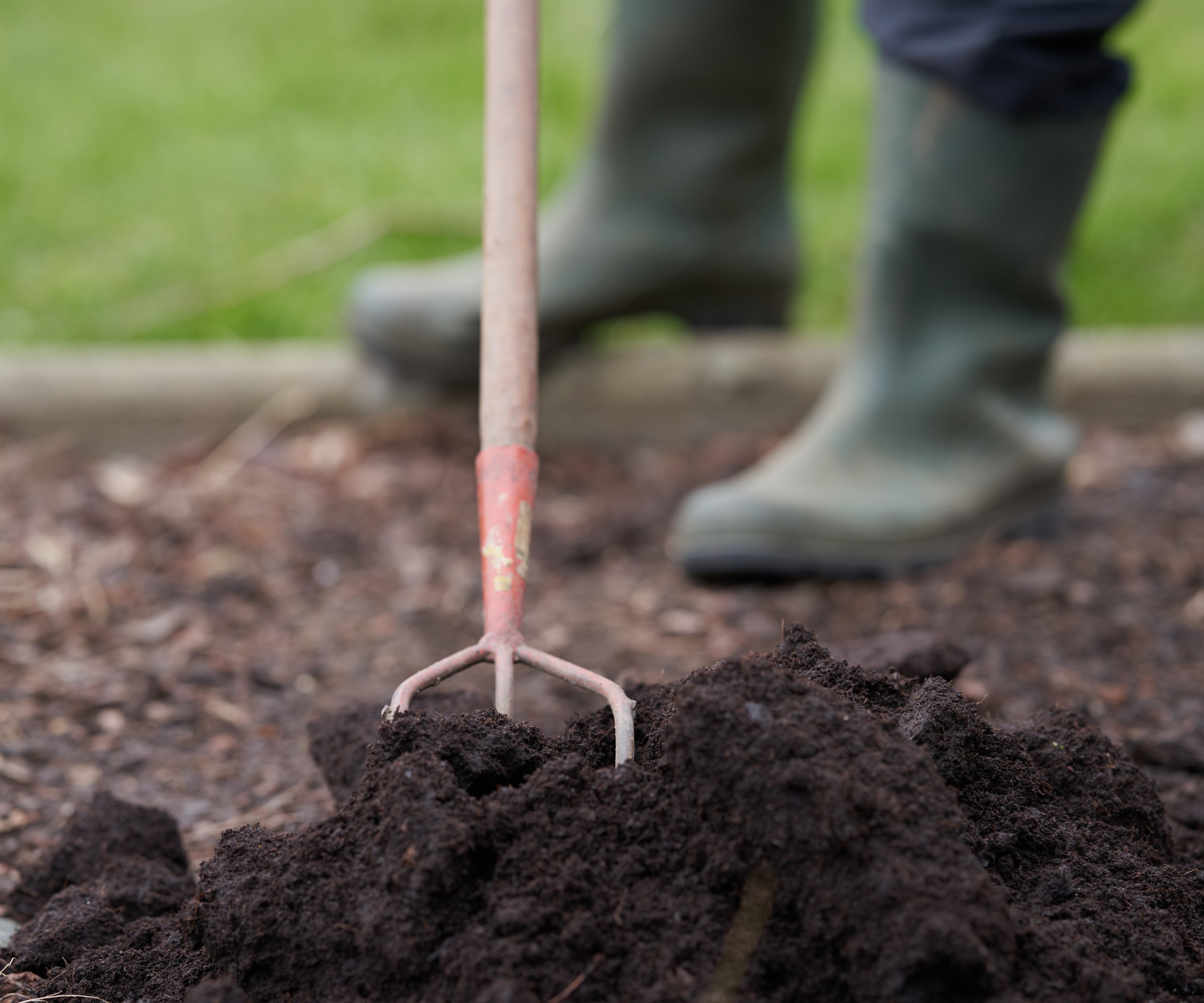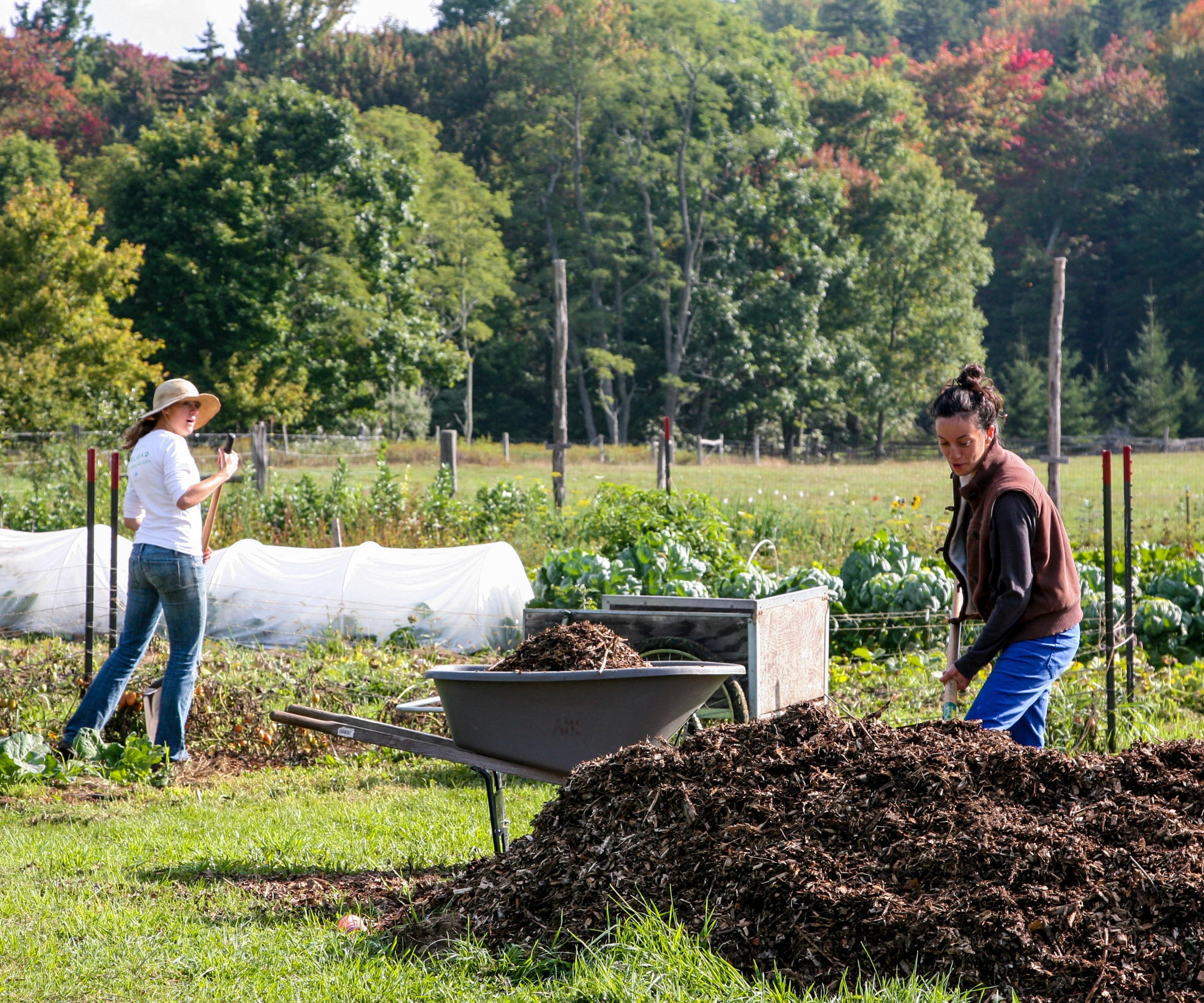Should I mulch my vegetable garden? Veg growing expert reveals why it can give you better crops
The answer is always ‘yes’ as mulching is crucial to a thriving vegetable garden


Mulching is a very important task in helping to create the best soil in a vegetable garden. By developing the soil health and structure, it means better crops and bigger yields.
There are many benefits to mulching, it improves soil fertility, boosts water retention, and reduces weeds competing with your vegetables. Choosing the best mulch can be tricky, however, as there are a variety of organic and inorganic options available.
I have been lucky enough to work in several vegetable gardens in the UK, learning from many highly experienced vegetable growers. One consistent thing has been the use of mulches in the vegetable garden, giving the soil an annual mulch prior to every growing season.

A thick layer of mulch in a vegetable garden offers many benefits
Should I use mulch in my vegetable garden?
Mulch is a layer of material placed on top of any soil types in the vegetable garden and around plants. All successful vegetable garden ideas should incorporate mulches into the annual maintenance. Mulches are hugely popular and play an important role in organic gardening techniques such as no dig gardening and lasagna gardening.
Adding that layer of mulch over the soil surface firstly helps to suppress and get rid of weeds. By smothering small weeds, and weed seeds in the soil, it goes a massive way to reducing the weed population of the vegetable garden. That means less unwanted plants competing with your vegetables for water and nutrients, and also less time needed painstakingly weeding the vegetable garden.
Organic mulches also add nutrients to the soil as they break down, often they are slow-release and the vegetables can benefit for many months from the nutrients being released. They will also improve the soil structure in terms of aeration and drainage, which all combine to make a healthier vegetable garden as a whole.
Mulches also help to retain moisture in the vegetable garden as it reduces water evaporation and keeps more moisture locked into the soil for plants to use. It also helps keep the soil cooler in summer and warmer in winter.
The final aspect is that using mulch in the vegetable garden can actually make the plot look more aesthetically pleasing. Bare soil not only looks unappealing but it actually loses nutrients through erosion, so covering it with a mulch not only makes the vegetable garden look nicer but it keeps those vital nutrients in the ground.

Organic mulches improve soil health and fertility
What should I mulch my vegetable garden with?
As mentioned before, there are many types of mulch and most options for mulching a vegetable garden can be classified as organic or inorganic. Sometimes you will also see these described as biodegradable or non-biodegradable mulches.
Organic mulches tend to be the preferred option for many home vegetable gardens and need to be applied at least once a year. Some of the traditional options include compost, leaf mold, well-rotted manure, straw, bark, or grass clippings from mowing a lawn. If you have a small vegetable garden or kitchen garden then organic mulches should be the preferred route to go.
These mulches break down slowly and are incorporated into the soil by worms. They add nutrients into the soil as they break down and are well-balanced in terms of nutrients. Any manure must be well-rotted before being added to the vegetable garden, or it can be harmful to plants.
Cardboard is also hugely useful in the vegetable garden and can be used as a mulch. It is a budget-friendly way to smother weeds and it does boost the soil as it decomposes. Always make sure that you use plain cardboard with all tape, labels or staples removed before laying as a mulch layer. Cardboard is used commonly as the base layer as part of no dig beds and building lasagna garden beds, where it is covered with further layers of compost and other materials.
Inorganic mulches don’t break down and are more permanent additions to the vegetable garden. They are low-maintenance and very good at suppressing weeds, but do not add any nutrients to the soil.
Common options for inorganic mulches include landscape fabric, rocks, gravel, or pebbles. If you use landscape fabric or plastic mulches, which you can get on Amazon, you can make holes in the material to grow plants through for a low-maintenance vegetable garden.
Nowadays there are some biodegradable options for landscape fabrics, such as ones made of paper, hemp or coco coir.

Vegetables can be planted through inorganic mulches
DeWitt NAT4300 Natural Biodegradable Paper Mulch | $129.99 at Walmart
A lightweight paper mulch that is 100 per cent organic and perfect for vegetable gardens. It's made from premium recycled paper and naturally biodegrades or can be tilled back into the soil.
When and how to mulch a vegetable garden
You can apply mulch at any time of the year, but the best time to fertilize a vegetable garden is in fall and spring. It tends to be the same for mulching flower beds as well. Vegetable gardens I worked in always mulched during fall and the early months of spring. But never mulch on top of frozen ground.
Adding a thick layer of around two-to-three inches of organic mulch in spring ensures the soil is weed-free and rich in nutrients when the vegetable plants are starting to grow. If you are mulching around any existing plants, such as perennial vegetables or fruit bushes, leave a ring around the plants and do not bury them under the mulch.
Try to weed the vegetable garden before applying any mulch and also, if it has been particularly dry, water the garden to help lock in as much moisture as possible. If you are laying inorganic mulches, these can simply be laid straight on top of weeds and they will be smothered. Landscape fabric or plastic sheets will need to be either weighted down or have the edges dug into the soil to stop it being blown away by winds.
Think carefully about your chosen mulch, how you spread it, and where you lay it. This is especially important if your vegetable garden is near the house. There have been incidents where mulch catches fire and mulching materials such as shredded rubber, pine needles, and cedar mulch are not recommended for use within 30 feet of the home.
If you are thinking of how to start a vegetable garden then it pays to plan long term and think how you will add mulching into your annual schedule. Not improving the soil is a common vegetable gardening mistake and your plants and your harvests will be impacted by not working to boost the soil health.
I think that mulching a vegetable garden is an essential task that should not be overlooked. There are so many ways and means to do it, so there are solutions for any size of vegetable garden and any budget. You can get healthier soil, bigger harvests, and less weeds – what’s not to like about that.
Sign up to the Homes & Gardens newsletter
Design expertise in your inbox – from inspiring decorating ideas and beautiful celebrity homes to practical gardening advice and shopping round-ups.

Drew’s passion for gardening started with growing vegetables and salad in raised beds in a small urban terrace garden. He has worked as a professional gardener in historic gardens and specialises in growing vegetables, fruit, herbs, and cut flowers as a kitchen gardener. That passion for growing extends to being an allotmenteer, garden blogger, and producing how-to gardening guides for websites. Drew was shortlisted for the New Talent of the Year award at the 2023 Garden Media Guild Awards.
-
 I’m an HVAC technician, and this is when I turn my AC on each year – plus 5 checks I always do beforehand
I’m an HVAC technician, and this is when I turn my AC on each year – plus 5 checks I always do beforehandSave yourself an AC hassle by running my checks and turning it on before big heat hits
By Josh Mitchell Published
-
 This simple marble hack elevates my budget-friendly wooden kitchen countertops and prevents the dreaded water damage for way less than you’d think
This simple marble hack elevates my budget-friendly wooden kitchen countertops and prevents the dreaded water damage for way less than you’d thinkThis design trick looks expensive, solves a problem, and was the easiest decision I made during my kitchen reno
By Charlotte Olby Published
